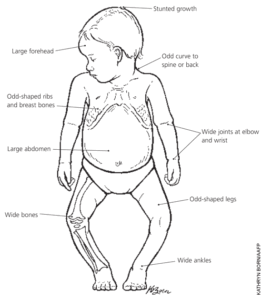Overview of Spine Osteoarthritis
Understanding Spine Osteoarthritis
Read Time: 4 mins
Introduction to Spine Osteoarthritis
Spine osteoarthritis can affect anyone, as it impacts the joints throughout the body, including the spine. This condition occurs when the discs between the vertebrae in the spine begin to deteriorate. Early detection and effective treatment can greatly improve the quality of life for individuals suffering from this condition.
Causes of Spine Osteoarthritis
The breakdown of spinal discs can be triggered by various factors, including:
-
Repetitive trauma from injuries, sports-related incidents, heavy lifting, or poor posture.
-
Age-related changes in spinal structures, typically noticeable when individuals reach their 30s.
-
Obesity or overweight conditions, which add extra stress on weight-bearing joints such as the spine.
-
Family history of osteoarthritis, particularly spine-related issues.
-
Association with other conditions, including rheumatoid arthritis, gout, diabetes, and infections.
While in many cases the cause of osteoarthritis in the spine is not fully understood, it is often linked to the aging process. When the cause is identified—such as injury or obesity—it is classified as secondary osteoarthritis of the spine.
Diagnosing Spine Osteoarthritis
If back pain persists for more than two months, it is essential to consult a doctor. The diagnostic process typically includes:
-
A detailed medical history review.
-
An evaluation of symptoms.
-
A physical examination.
-
Imaging tests like X-rays or MRIs to assess the spine.
-
Additional tests (e.g., blood tests, bone scans) may be conducted to rule out other potential conditions.
X-rays are helpful, but alone they do not provide enough information for a comprehensive diagnosis. Many people over the age of 60 show degenerative spinal changes consistent with osteoarthritis, but not everyone experiences pain. Proper diagnosis is essential for effective treatment.
Symptoms of Spine Osteoarthritis
As the discs between the vertebrae deteriorate, the spaces between them narrow. This can lead to the formation of bone spurs or osteophytes, which can cause inflammation and further joint degeneration. The key symptoms of spine osteoarthritis include:
-
Back pain or discomfort in the spine.
-
Stiffness in the spine.
-
Reduced flexibility in spinal movement.
Osteoarthritis can affect the cervical (neck), thoracic (mid-back), or lumbar (lower back) regions of the spine. In cases of cervical osteoarthritis, pain may radiate from the neck to the shoulders or arms. Osteophytes in this area can also compress nerves, leading to weakness in the hands. In the thoracic region, osteoarthritis pain typically increases with forward flexion or hyperextension movements. In the lumbar region, symptoms include morning stiffness lasting longer than 30 minutes and may involve multiple vertebrae. Physical activity, repetitive movements, or prolonged sitting can exacerbate symptoms, making back pain a recurrent issue.
What Is Facet Arthropathy?
Facet arthropathy refers to degeneration of the facet joints, which are located between the vertebrae. This condition is often associated with osteoarthritis and can contribute to pain and stiffness in the back.
Treatment for Spine Osteoarthritis
There are both non-surgical and surgical options available to manage spine osteoarthritis:
-
Non-surgical treatments:
-
Medications such as NSAIDs, acetaminophen, and opioid analgesics to manage pain.
-
Physical therapy to improve mobility and reduce stiffness.
-
Exercise to strengthen muscles supporting the spine.
-
Weight management to reduce stress on the spine.
-
Heat or cold therapy to alleviate pain.
-
Water therapy and massage for relief.
-
TENS (Transcutaneous Electrical Nerve Stimulation) to reduce pain signals.
-
Bracing for spinal support.
-
For many individuals with degenerative disc disease, surgery is not required. However, if conservative treatments fail over time, surgical options may be considered, including lumbar laminectomy, discectomy, and spinal fusion.
Key Takeaways
-
Spine osteoarthritis is a gradual condition affecting the discs between the vertebrae.
-
Common causes include age, obesity, trauma, and family history.
-
Symptoms may vary by spinal region and can involve pain, stiffness, and limited movement.
-
Early diagnosis and proper treatment are crucial for managing the condition effectively.
-
Non-surgical treatments often provide relief, but surgery may be necessary in severe cases.
This condition, though prevalent, can often be managed successfully with appropriate medical intervention.







